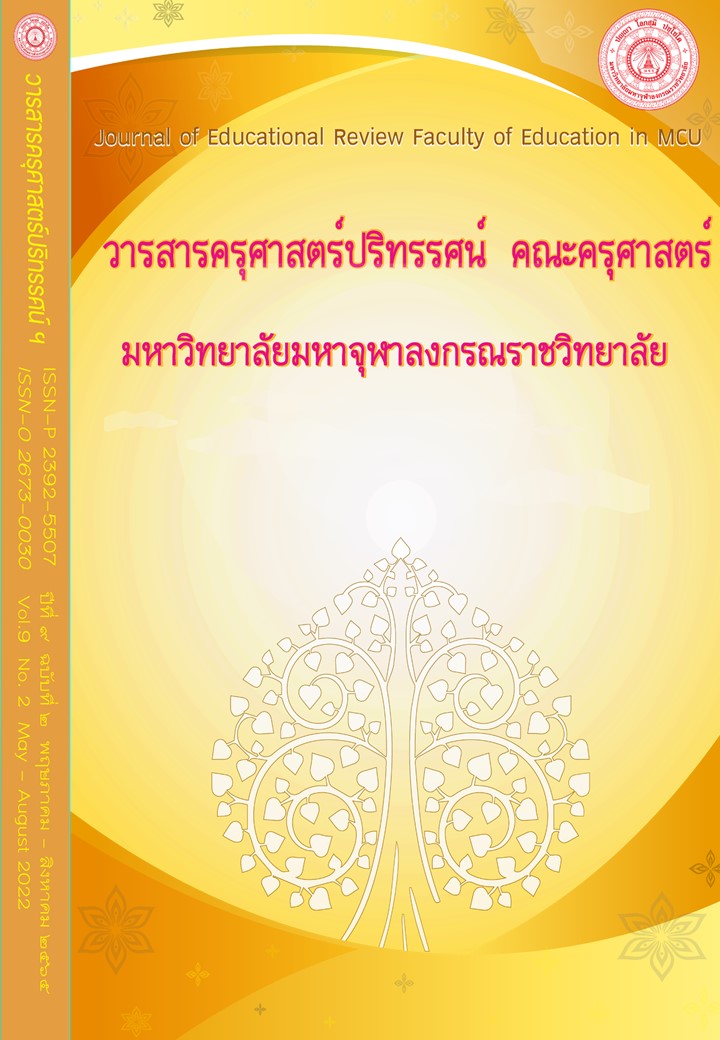A NEEDS ASSESSMENT OF DEVELOPING ADMINISTRATIVE STAFFS OF CHULALONGKORN UNIVERSITY'S INTERNATIONAL PROGRAMS ACCORDING TO THE CONCEPT OF EXCELLENCE SERVICE
Main Article Content
Abstract
This article aims to analyze the factors needed for capacity development of Chulalongkorn University’s administrative staffs in international programs by assessing the current and expected working conditions under the excellence service framework. This research employs quantitative method and collected data from the population of 50 of Chulalongkorn’s administrative staffs in international programs through a questionnaire, and analyzing data from 35 usable respondents. The questionnaire surveys the demographic of the respondents and asks the current working conditions and the expected working conditions with open-ended questions. The statistical methods used in this study are frequency, percentage, mean, standard deviation (SD), and PNI modified. The survey shows that the overall engagement level of the respondents on the current working condition is high. On the expected working conditions, the data showed highest level of expectation. The analysis from this data found that the most important factor for capacity development among administrative staffs in international programs is the determination to continuously meet the goals and expectations (PNIModified =0.30), followed by the urge to seek new challenges (PNIModified =0.27), the determination to achieve university-level excellence (PNIModified =0.23), with the determination to improve the end results of their work as the least needed factor (PNIModified =0.22).
Article Details

This work is licensed under a Creative Commons Attribution-NonCommercial-NoDerivatives 4.0 International License.
ทัศนะและความคิดเห็นที่ปรากฏในบทความในวารสารฉบับนี้ถือเป็นความรับผิดชอบของผู้เขียนบทความนั้นเพียงผู้เดียว และไม่ถือเป็นทัศนะและความรับผิดชอบของกองบรรณาธิการ
กองบรรณาธิการขอสงวนสิทธิ์ในการคัดเลือกบทความลงตีพิมพ์และจะแจ้งให้เจ้าของบทความทราบหลังจากผู้ประเมินบทความตรวจอ่านบทความแล้ว
ต้นฉบับที่ได้รับการตีพิมพ์ในวารสารครุศาสตร์ปริทรรศน์ คณะครุศาสตร์ มหาวิทยาลัยมหาจุฬาลงกรณราชวิทยาลัย ถือเป็นกรรมสิทธิ์ของคณะครุศาสตร์ มหาวิทยาลัยมหาจุฬาลงกรณราชวิทยาลัย ห้ามนำข้อความทั้งหมดหรือบางส่วนไปพิมพ์ซ้ำ เว้นเสียแต่ว่าจะได้รับอนุญาตจากมหาวิทยาลัยฯ เป็นลายลักษณ์อักษร
References
ชุติมา สุดจรรยา และเทื้อน ทองแก้ว. (2562). ความเป็นนานาชาติ: ความสำคัญของสถาบันอุดมศึกษาไทยในเวทีระดับนานาชาติ. วารสารสุโขทัยธรรมาธิราช. 32
พิสิทธิ์ พิพัฒน์โภคากุล. (2553). บริการที่เป็นเลิศ : วัฒนธรรมบริการ. กรุงเทพมหานคร: ดิอิมเพรสชั่น คอนซัลแทนท์.
ไวพจน์ กุลาชัย และปฏิพล หอมยามเย็น. (2562). การพัฒนาทรัพยากรมนุษย์ : ความท้าทายใหม่ในสังคมยุคปั่นป่วน. ใน หทัยรัตน์ อ่วมน้อย บรรณาธิการ. รายงานสืบเนื่องการประชุมวิชาการและนิทรรศการระดับชาติ ครั้งที่ 1 ความสมดุลระหว่างวิทยาศาสตร์ และมนุษย์ศาสตร์. ปทุมธานี: มหาวิทยาลัยราชภัฏวไลยอลงกรณ์ ในพระบรมราชูปถัมภ์.
สุภัสรา วิภากูล. (2561). คุณภาพการให้บริการที่เป็นเลิศกับความประทับใจของผู้ใช้บริการในสถาบันอุดมศึกษา. วารสารศึกษาศาสตร์ มหาวิทยาลัยศิลปากร. 16(2). 20-33.
อังสุมารินทร์ อนุติ, ชัยพจน์ รักงาม และภัคณัฏฐ์ สมพงษ์ธรรม. (2563). ปัจจัยที่ส่งผลต่อความมุ่งมั่นในการปฏิบัติงานของครูโรงเรียนสังกัดเมืองพัทยา. วารสารเทคโนโลยีภาคใต้. 13(2). 140-149.
สำนักงานคณะกรรมการอุดมศึกษา กระทรวงศึกษาธิการ. (2550). กรอบแผนอุดมศึกษาระยะยาว 15 ปี ฉบับที่ 2 (พ.ศ. 2551-2565). แหล่งที่มา http://www.sci.ubu.ac.th/assets/upload/files/ HEPlan-Final.pdf สืบค้นเมื่อ 1 มิ.ย. 2565.
สำนักบริหารทรัพยากรมนุษย์ จุฬาลงกรณ์มหาวิทยาลัย. (2560). การพัฒนาบุคลากร. แหล่งที่มา https://www.hrm.chula.ac.th/newhrm/การพัฒนาบุคลากร/ สืบค้นเมื่อ 1 มิ.ย. 2565.
Davenport, T. H., Thomas, R. J., & Cantrell, S. (2002). The Mysterious Art and Sciences of Knowledge-Worker Performance. MIT Sloan Management Review. 39(2). 23-30.
Flamini, V., McDonald, C. A., and Schumacher, L. B. (2009). The determinants of commercial bank profitability in Sub-Saharan Africa. IMF Working Papers 09.
Masron, T. A., Ahmad, Z., & Rahim, N. B. (2012). Key Performance Indicators vs Key Intangible Performance Among Academic Staff: A Case Study of a Public University in Malaysia. Procedia - Social and Behavioral Sciences. 56(8). 494-503.
McClelland, D. C. (1973). Testing for competence rather than for “intelligence”. American Psychologist. 28(1). 1-14.
Schumacher, S. (2009). High-potential employees. Rock Products. 112(1). 30-32.


